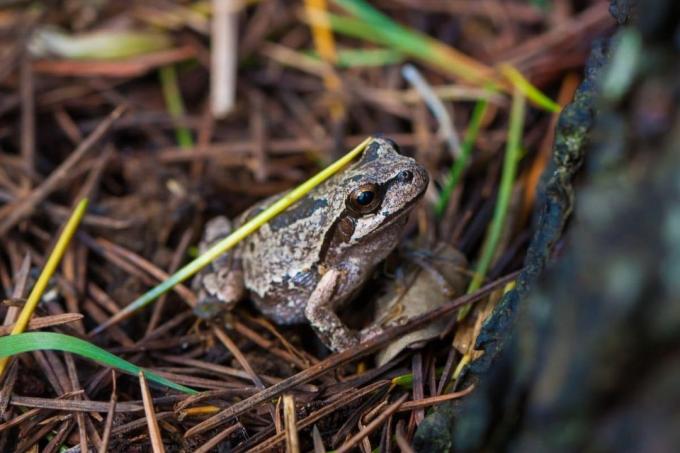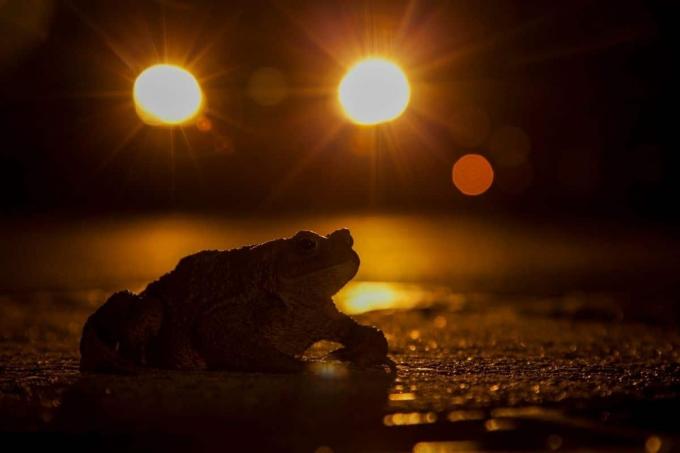
table of contents
- Free range or captivity
- Average life expectancy of common species
- Death from predators
- Death by people
- frequently asked Questions
There are around 2600 different species of frogs worldwide. The lifespan and thus the age of the frogs varies from species to species. The average life expectancy is 10 years. There are species that grow older or die younger.
In a nutshell
- different life expectancy of frogs in captivity and in the wild
- average life expectancy of 10 years
- Threat from predators
- many frogs die in traffic
Free range or captivity
There are large differences in the age of frogs in the wild and in captivity. In captivity, the life expectancy of frogs is significantly higher because they are not in danger of being killed by predators, for example.
In captivity it cannot be ruled out that a frog may die early, but the life expectancy of some species is 20-25 years. Tree frogs can easily live up to 25 years in captivity. The natterjack toad grows even older in a protected environment, and can live up to 33 years of age.

Note: Frogs and toads are partially protected in Germany and completely protected in some federal states. The animals may therefore not be caught for private keeping.
The average life expectancy is therefore significantly lower outdoors. In the best case scenario, the tree frog can live to be four to six years old. He seldom reaches the age of twelve. This is usually only the case with specimens that live in a protected area such as a nature reserve.
Average life expectancy of common species
Below is an overview of the average life expectancy of frogs and some common toads that live in Germany.
- Tree frog: 4 - 6 years
- Common frog: 3 - 12 years
- Moor frog: 10-12 years
- Agile frog: 8-10 years
- Edible frog: 6 - 8 years
- Sea frog: 6 - 7 years

Death from predators
One factor limiting the lifespan of frogs and toads in the wild is the variety of predators they have. Depending on the biotope in which the amphibians live, different enemies lurk in the water and on land.
The most common predators of frogs include:
- Snakes (mainly grass snake and adder)
- Hedgehog
- Birds (storks, kingfisher)
- foxes
- marten
- Badgers
- Polecats

Note: As spawn or tadpoles, frogs are primarily threatened by the fish that eat them.
Death by people
In addition to natural predators, humans have become an increasing threat in recent years. The increasing loss of habitats is a problem for frogs. Smaller water points are filled in, which means that they can no longer return to their spawning grounds.
Road traffic is also a major problem during spawning season. To get to these places, many frogs have to cross roads that become death traps for them. For this reason, conservationists install fences on known routes where many amphibians cross, which the frogs cannot use. They collect the frogs mainly at dusk or at dusk. one at night and then carry her across the street.

Frogs can cover a distance of around half a kilometer per day. Besides the dangerous Toad walks to the spawning grounds they also switch between summer and winter quarters, which can also be several kilometers apart.
frequently asked Questions
Frogs need a special terrarium that is suitable for amphibians. The humidity in particular plays an important role for frogs, as they can die if the humidity is too low. However, keeping frogs in a terrarium requires a lot of knowledge, which is why the animals are not suitable for beginners in terrarium keeping.
A suitable habitat and food sources are important. Of course, it cannot be ruled out that predators of the frogs will also settle, but you can establish a stable population with a suitable habitat. Suitable spawning areas such as small ponds are important for frogs, but they are supplied with fresh water.
It is difficult for laypeople to determine how old a frog is. The body size is an indication that you can roughly estimate how old a frog is. As a rule, however, specimens that have a conspicuous pattern are caught and marked in the wild. Every year, for example, they are searched for at the spawning grounds, and in this way it can be determined how old frogs are on average in the wild.



